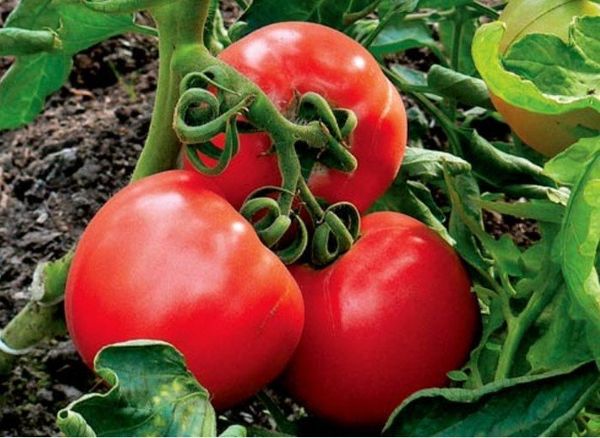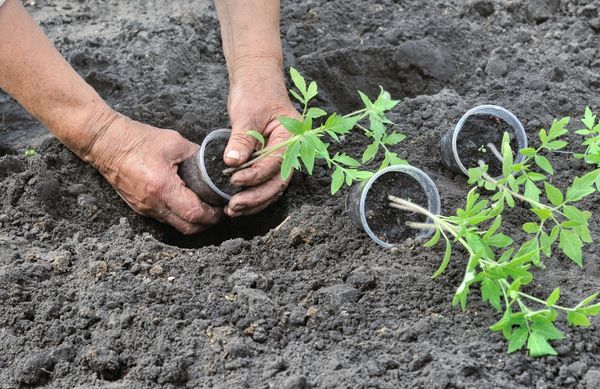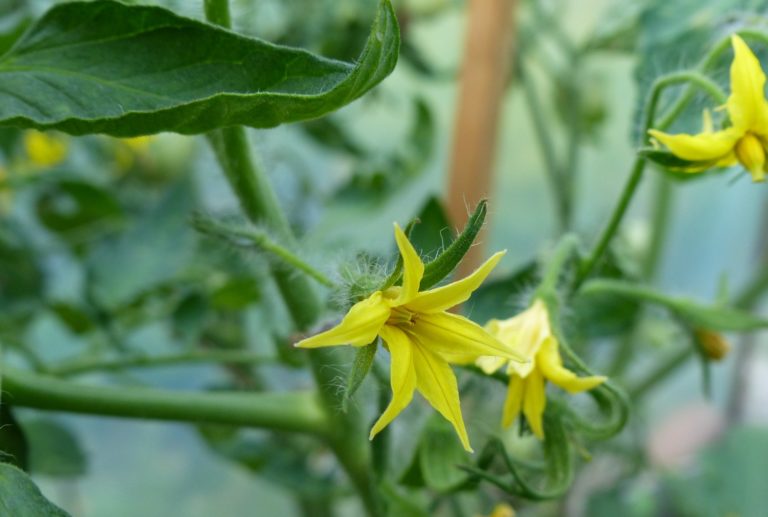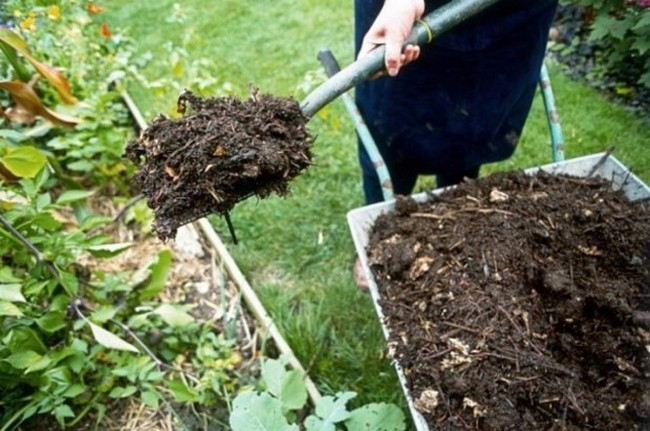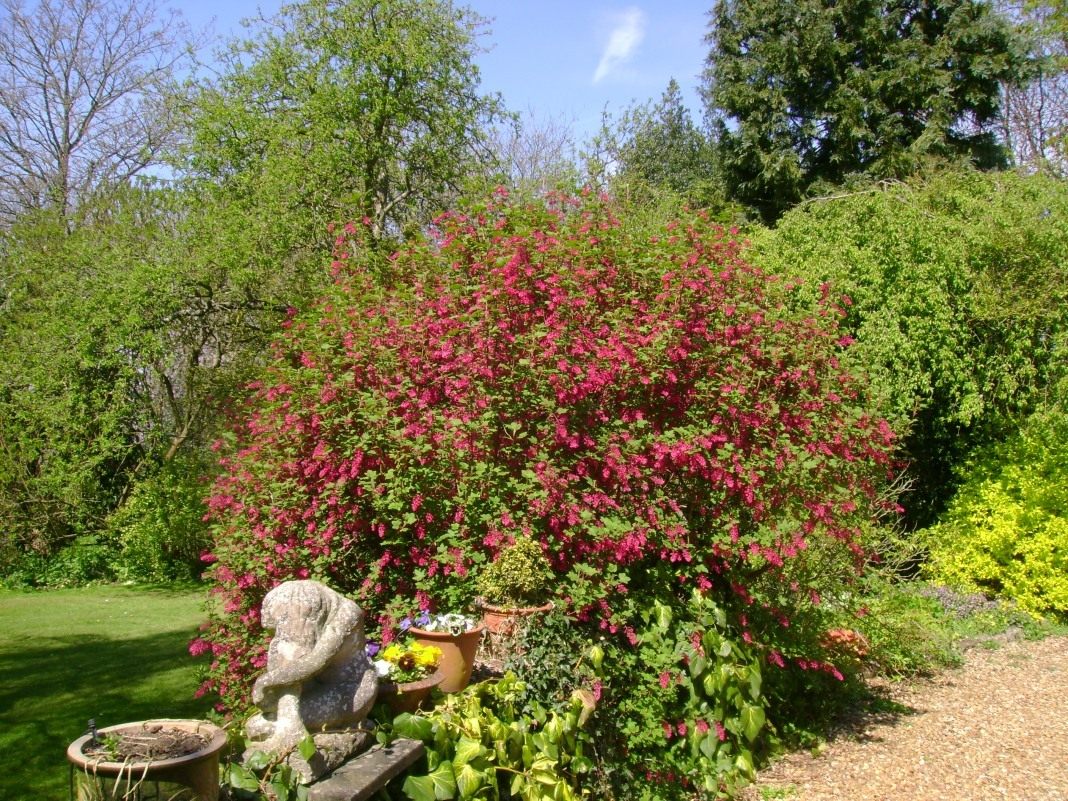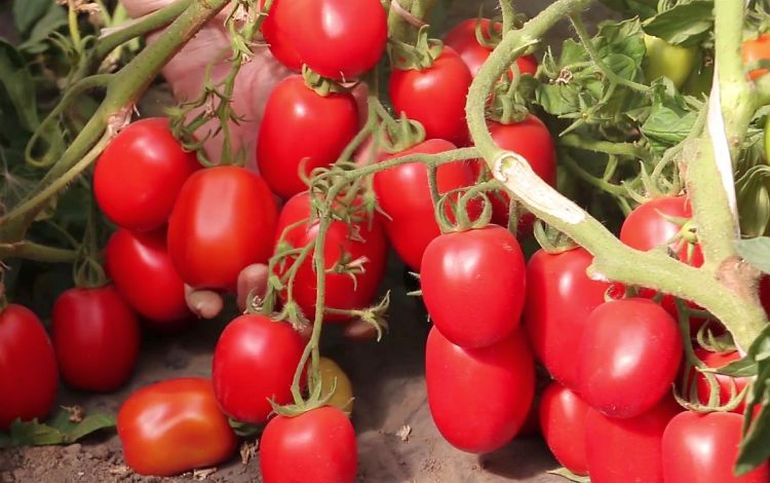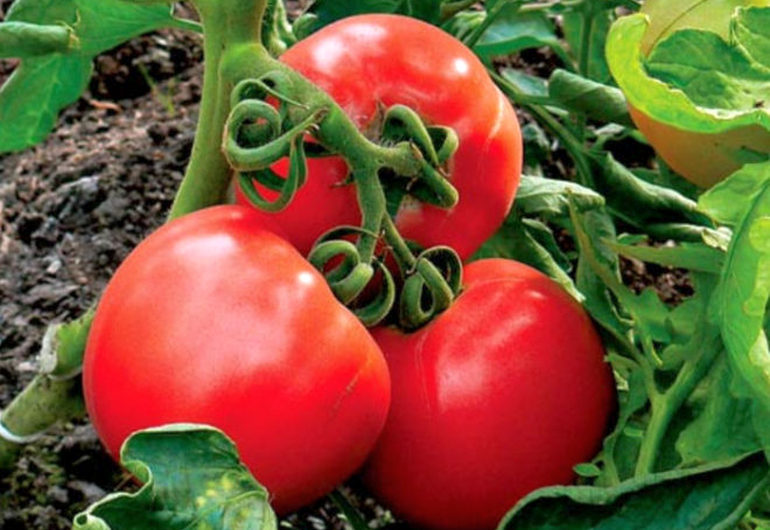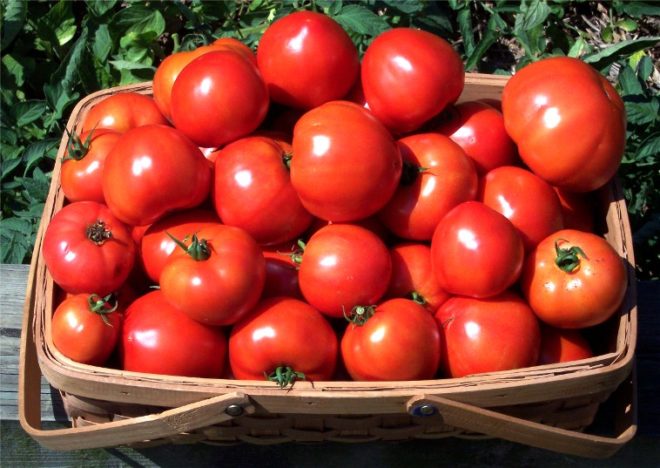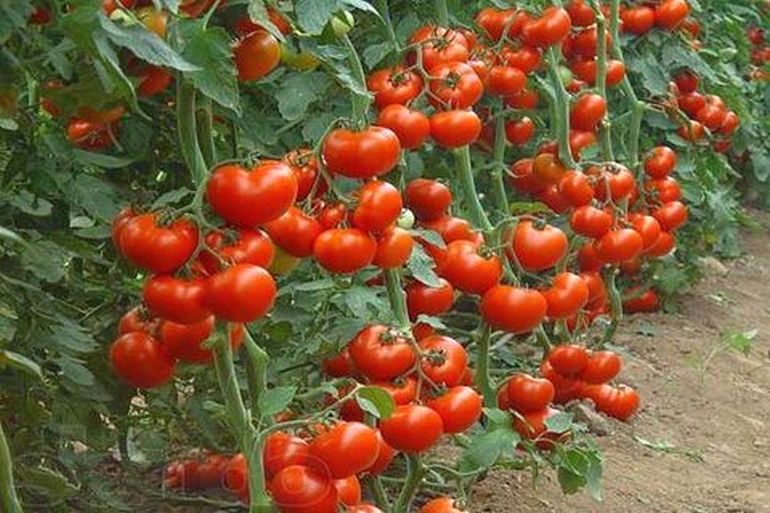Content:
All gardeners want to collect the largest possible tomatoes from their beds. Going to meet them, breeders create more and more varieties of large-fruited tomatoes. One of them received the telling name King of the Early and from year to year is gaining popularity among summer residents and farmers.
History of creation
Usually early fruit-bearing tomatoes are not large, almost all "heroes" ripen much later than small varieties, and early-ripening varieties rarely have a really sweet "tomato" taste - there is always sourness. A remarkable exception is the King of the Early.
This tomato is a pure variety, which was obtained as a result of the selection work of Russian breeders from the Siberian Garden company, registered in the State Register in 2005. The cultivation of such tomatoes is possible both in open beds and in greenhouse conditions. The variety is recommended for cultivation in all regions of our country, its early maturity especially plays into the hands of gardeners from Siberia and the Urals, where the summer is quite short.
Characteristics and features of the variety
Tomato King of the early is a frost-resistant species, which makes it possible to grow it not only in southern vegetable gardens. A distinctive feature of the variety is the fast and friendly ripening of fruits: it takes only a hundred (and even less in the southern regions) days to get ripe tomatoes from seedlings. Each tomato stretches no less than 300 grams, and there are also champions (“king size”) under 400 grams.
The bushes of this type have a semi-determinant type: they grow small - their height is about half a meter, but powerful and strong (after all, they have to hold a considerable weight of ripening "royal" fruits). The flowers of the plant are ordinary, bright yellow in color, two- and three-celled, with simple internodes. The tomato has both male and female flowers, so it does not need pollination by bees or other insects.
The foliage has the usual green tint for tomatoes, however, the type of leaf is potato (its lobes are shaped like a heart), which is quite rare among tomatoes, since it is determined by a recessive gene. The foliage of the bushes is above average. The bushes of the standard type tomato - the growth of shoots and their branching is regulated by the plant independently. The tomato stems are powerful and branched.
The plant gives fruits a round, slightly flattened shape, with juicy, fleshy bright red pulp (before maturity it is light green). They have full seminal chambers, but not very much fluid itself. The skin of tomatoes is thin but firm, and the dry matter content is 5-6 percent. When using the correct agricultural techniques, correctly selected type of soil, the yield of the King of the Early is on average about 5 kilograms from one bush or up to 9 kilograms from 1 square meter of tomato garden. These tomatoes have a very high keeping rate, so they can be sold through retail chains and transported over long distances.
According to experts and consumers, the taste qualities of King early tomatoes are higher than average, especially in comparison with other early ripening varieties. Universal use:
- fresh;
- in salads (this variety belongs to salad);
- salting, pickles (the smallest fruits are used);
- ketchup, tomato sauce;
- tomato juice;
- in the form of tomato juice or puree.
Agricultural technology and care
Like other types of tomato, King of the Early is propagated by seedlings. Seed material for receiving seedlings is planted in special planting containers with a moistened substrate in the last decade of February and early March. Previously, the seeds are immersed for 10 minutes in a slightly pink solution of potassium permanganate for disinfection, after which they are rinsed with plain water. The depth of the bookmark should not exceed a couple of centimeters.
From above, the containers are covered with foil or glass, creating a greenhouse environment, until the first shoots appear. Then the "lid" is removed, and the containers with seedlings are placed in the light, in a place protected from drafts. It is advisable to keep seedlings for a week at a low temperature (no more than +16 degrees) - this will prevent premature stretching of the seedlings. Then the temperature can be increased to room temperature. After five days, it is necessary to moisten the soil in the containers with a spray gun so as not to hurt the greens of the seedlings.
After young tomatoes have released two full-fledged litters, they must be dived into different containers, which will allow them to develop more intensively. Seedlings should be fertilized with mineral fertilizers about two or even 3 times, up to planting in a permanent place. It is also necessary to harden the plants by taking them to a cooler place for some time (balcony or windowsill with an open window), gradually increasing the holding time.
By the time of planting in open ground or in a greenhouse, the seedlings should be at least 50-60 days old, and at least one brush with future flowers has been released.
For growing this tomato variety, light, highly fertile soils are best suited, it is advisable to place the beds in a site protected from the winds, with good solar heating. Gardening experts recommend planting seedlings in the places where cucumbers, cabbage, carrots and various types of legumes previously grew. There should be no more than 3-4 plants per square meter of tomato plantings. This planting scheme is common for determinant bushes: the distance between tomatoes is from 0.5 to 0.7 meters, and the row spacing is from 0.7 to 1 meter.
Watering rooted seedlings should be abundant, but not too often. One watering every 7-10 days is enough before the plant begins to bloom, after the release of inflorescences, the frequency of moistening should be increased to 2-3 times. For watering, it is best to use clean water at room temperature. It is advisable to carry out the procedure in the evening, directing the stream directly under the root of the plant.
Ten days after rooting in a permanent place, young tomatoes must be weeded out (after that, you will have to repeat this manipulation a couple more times). Together with weeding, soil loosening is also carried out. You can reduce the number of these manipulations by mulching the beds, in addition, this will help fight weeds and slugs, and also protect against drying out of the soil.
One of the necessary care procedures for growing tomatoes is feeding for more intensive and successful growth. It is carried out once every ten days during the entire growing season. You can use both organic (cow's infusion or diluted bird droppings) and mineral supplements (nitrophoska at a concentration of 60 grams per 1 bucket of water).
Many novice gardeners believe that undersized tomato bushes should not be tied up, however, this is not the case for such a productive giant as the King of the Early. If you do not take the time and do not tie up the plants in time when the ovaries are formed, they simply will not be able to withstand the heavy ripening fruits. Then the stem can break, tomato bushes will fall on the ground and begin to take root, and tomatoes and foliage will get wet and dirty in the ground, making it easier for various pests to access.
It is imperative to carry out pinching and rationing of bushes - to prevent excessive spreading, which is unacceptable with a bountiful harvest, this will also help to get larger fruits. Stepsons and leaves from the root zone are removed at the time when the first fruit brushes begin to ripen.
This variety has a fairly good immunity against diseases, but one should not neglect preventive measures that can protect tomatoes from fungal infections. It is advisable to spray the bushes with special solutions, for example, laundry soap diluted in a bucket of water helps against insect pests. It is also necessary to observe hygienic measures during cultivation: prevention of drafts, stagnation of air and water on the soil, as well as thickening of plantings and dropping of foliage and ripening fruits on the ground.
Advantages and disadvantages of the variety
For the King of the early tomato, when characterizing and describing the variety, you should indicate its pros and cons, which will help gardeners to choose it.
So, these royal tomatoes boast benefits such as:
- first of all, very early ripening, which is reflected in the name of the variety;
- increased productivity (subject to the appropriate agrotechnical conditions);
- high taste of fruits and versatility of their use;
- dense skin provides increased keeping quality, which allows long-distance transportation of the harvested crop;
- the possibility of growing, both in greenhouses and in open beds;
- easy techniques of agricultural technology.
Like any variety, the King of the Early has its drawbacks:
- even a dense skin on tomatoes, when overripe or insufficient watering, can crack, which spoils the presentation of the fruit;
- after finishing (the bush is stuck and does not stretch up), a new ovary is almost not formed;
- simultaneous ripening of large fruits requires increased attention to plant nutrition and to tying branches.
Among the variety of tomato varieties, summer residents who prefer to harvest faster, can be advised by the King of the Early. This tomato is capable of producing a good harvest of large, tasty and juicy tomatoes in a short growing season. Of course, for this you will have to work hard, making fertilizing, carrying out a garter and pinching, and also regularly watering, but the result is worth it.
